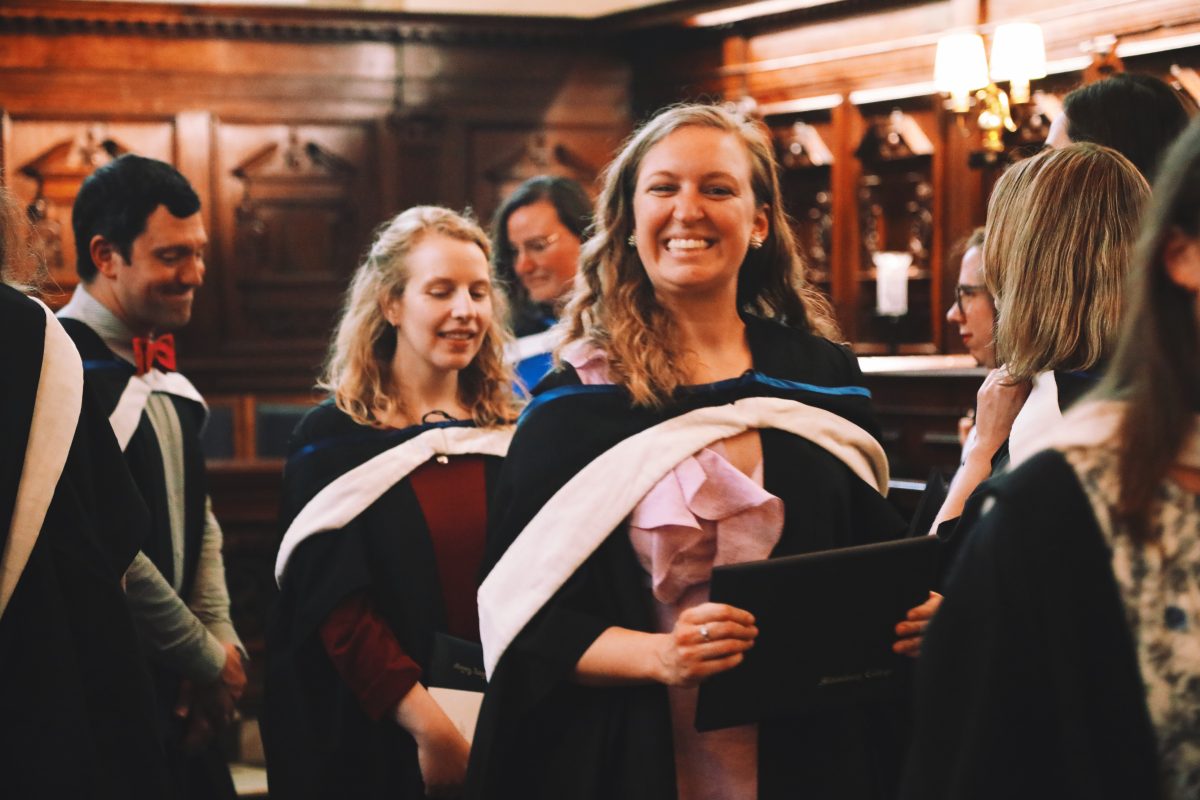Eric Volpert (’16) went from hacking simple computer games, to making $65 per hour working for himself. Two and a half years ago in Pennsylvania, Volpert started his own IT support company called Volptech. He began with a “$20 seed investment”, which he used to buy business cards for himself. Volpert handed out business cards to people at “any opportunity”, in order to promote his business.
He started off riding his bike and being driven by his mother to various appointments, charging $20 per hour.
“Once you pick up the first few clients they start referring you to everybody, which is great,” Volpert said. As his client base grew, Volpert began to charge more for his services. By the time he left the U.S. to move to London this past year, Volpert was working 6 to 10 hours a week, charging $65 per hour.
Volptech is a general IT company, meaning that Volpert provides various in-home technology services. These tasks include speeding up computers, setting up additional security on devices and fixing hardware problems for his clients.
When he was younger, Volpert played a lot of computer games. Around the age of 10, he “got bored of the games so [he] was looking at ways to hack the games.” Then, instead of breaking the existing programs, he began to write additional scripts to assist him with the games.
The majority of Volpert’s computer science knowledge was self-taught or individually sourced. He took Advanced Placement (AP) Computer Science through Stanford University online courses in his freshman year because his school at the time in Pennsylvania didn’t offer it.
Online courses are hugely beneficial to Volpert, as he said, “I’m learning what I do as I work.”
He sources a lot of information from Coursera, which offers online courses from top universities for free, and Udasity, which offers online courses by professionals in the tech industry.
Volpert believes that schools need to put more of an emphasis on programming, “the technologies that we use every day are all powered by code. Kids should be learning to code as young as you could possibly teach them because it’s what the future is going to look like and you want to be preparing kids for their futures,” he said.
He envisions that students will be learning programming languages with the same importance that they’re learning grammar.
“The biggest struggle [with Volptech] right now most definitely is gaining clients in London,” Volpert said. His handful of London-based clients doesn’t compare to the 85 he had at home in Pennsylvania.
The London IT business market is hard for Volpert to get into. “The people back home I’d lived with my entire life and grown up with,” Volpert said. He hopes to get referred in the ASL bulletin, Take Point, once he begins servicing clients within the ASL community.
Another issue Volpert is facing with Volptech is that it’s not “scalable.” If he were to employ others to work at his company, Volpert feels that the standard of service would be compromised. However, single-handedly, he can only also sustain so many clients.
Volpert is also a member of a “hackathon” team. He and the other four members travel to hackathons a few times per month. The events are generally sponsored by companies who give out their software components, and each team works to develop the most creative and impressive software program with the code that they’re given.
“[I’m] incorporating as much coding as I can in my regular core classes,” Volpert said. He was assigned a creative project assignment in his Shakespeare class, so he decided to create “a musical abstraction of a Shakespeare text.” He created a program that was able to read the text, detect specific mood-triggering words and assign an arbitrary rating to specific passages based on the mood. From there, the rating system feeds into a keyboard, which will play a piece of music that develops and shifts mood with the Shakespeare text.
Moving forward, Volpert plans to relaunch Volptech, or launch an entirely new company that’s versatile enough to jump on any project “that could possibly turn a profit.” He envisions a company that will adapt with the fast-paced technology industry, constantly seeking to work with the newest ideas and innovations.
“You want to be alert, you want to be aware of what’s going on, and be aware of emerging technologies and be able to capitalize on those emerging technologies,” Volpert said. “Dedicating yourself to a single idea and to a single product is not the way to do that.”
Sam Zorek (’15) has been working toward his goal of becoming an astronaut by pursuing computer science and engineering in and out of the classroom.
Zorek began studying computer science in a Grade 8 Interactive Animation Class. He then took Java Programming and AP Computer Science during his freshman and sophomore years, respectively.
“From the start, I’ve viewed computer science and programming as an opportunity to create things that could be of use to others,” Zorek said.
This pursuit for service is exemplified in his work at the Naval Postgraduate School in Monterey, California. Two summers ago, Zorek had an internship funded by the Office of Naval Research, in the center for cyber warfare.
His job was to develop malware (malicious computer software, often viruses), with the object of elucidating weak points in their computer programs. In turn, this enables the Navy to strengthen their system’s security.
“I enjoyed being able to contribute to the greater cause and help protect America and its allies,” Zorek said of his work in malware development. The amount of information Zorek can disclose about his work with malware is limited, as it concerns U.S. national security.
This past summer, Zorek had another internship at the Naval Postgraduate School, but this time in the Space Systems lab. “I worked on a High Altitude Balloon (HAB) project to test technologies in a near-space environment,” Zorek said. Specifically, he worked with the mechanical hardware and the software components for the HAB flight.
Originally, Zorek was seeking an internship with the National Aeronautics and Space Administration (NASA), however those internship programs were defunded and shut down due to a budget crisis in the U.S. He found both his internship positions when searching online for engineering internships.
The most intimidating and challenging part of computer science, in Zorek’s opinion, is learning the first coding language. “At its core, computer science is a way of converting human thought into something that a machine can process and understand,” Zorek said. He accepts that teaching one’s brain to think in a computational manner can be an obstacle.
The first coding language Zorek learned was Java; he then went on to learn C++ and Python on his own. “One of the nice things about programming languages is that once you learn one high-level language, it’s relatively simple to learn others,” Zorek said.
Zorek is currently one of the captains of the robotics team. He focuses primarily on the mechanical design and physical building aspects of the robots. However, his strong computer science knowledge enables him to fully comprehend and assist with the software aspects.
Although Zorek has been interested in computer science throughout high school, he wants to pursue mechanical or aerospace engineering.
Similar to his work with robotics, he wants to focus on the hardware, as opposed to the software. Despite this, he appreciates the growing value of having computer science skills, as they “are applicable to lots of fields.”
“In a world where computers and machines can perform lots of different tasks that were originally done by humans, the value of humans being able to process things on their own repetitively has decreased, and instead the value of humans will be to control the computers and use them,” Zorek said.
From a young age, Trevor Adams (’18) was intrigued by computers because he had “no idea how they worked.” He began playing around with the hardware components of various electronics, such as keyboards and computers, his interest driven by his curiosity. And, through his tinkering, he developed the basis of his interest in engineering and design.
When Adams was about 12 or 13, he took note of the drones he was seeing all over the news in Iraq. He was excited by “something that can do a mission without anybody touching it,” and so tried to delve into that.
However, Adams’ interest lies within the practical application of unmanned flying machines. His ideas and intentions are slightly more peaceful in comparison to their military counterparts.
“I’m trying to make drones look more approachable,” Adams said. He believes most people focus on the violent functions of drones, and aren’t aware that they can be used for quick food delivery or even avalanche rescue missions.
Adams recently finished his first fully-built drone. When making a drone, the first step for Adams is using Inventor and Adobe Illustrator applications to design all the structural parts of the pilotless aircraft. He then sends many of his designs out to a company that custom-cuts the pieces out of carbon fiber for him. Adams uses carbon fiber because “it’s as light as plastic but stronger than aluminium.” Creating a stable lightweight aircraft is essential for Adams, as he is working to use his drones for videography.
Adams also uses wood for structural aspects of his drones because it eliminates camera shake by absorbing vibrations, which makes for a clearer video.
Once he’s outlined the structure of the drone, Adams then works with the electrical aspects. He begins with the propellor and the motor, which he sources from an online “hobby company.”
Adams prides himself in creating “fully autonomous” drones. In order to achieve that, he codes the drone’s control board to adjust the specific altitude, speed and climb rate aspects of the drone’s movement. He uses a “dumbed down version of bear code” (an application development program), called APM Flight Planner.
The entire process, from first opening his design application, to tweaking the final algorithm, took about six months.
“I study drones and their integration in culture,” Adams said. He works to use drones in civilian settings, namely focusing on using them for aerial photography and aerial videography. In the future, Adams hopes to use a 3D mapping application with his drone.
“Everyone has this overriding fear of drones because… drones don’t have a face, they’re faceless,” Adams said. One of the biggest obstacles Adams has run into is public opinion. When working with drones at his home in Rhode Island, he’s been approached multiple times by people who question the legality of his activity and his motives in working with drones. As long as Adams stays within the regulations regarding where he can fly the drones, his work is completely within the law.
Adams recently transferred from ASL to Kimball Union, a boarding school in New Hampshire. Despite his relocation, he will continue his drone work and hopes to work with videography and cinematography.
Although Adams is fully aware of the negative stigma that comes with drone work, due to their usage in military combat, he is set on pursuing a profession in the civilian drone industry.
“It’s weird doing what I do for fun because people so disapprove of it and are so shaded by the controversy of it,” Adams said.
However, he doesn’t care: He’s working hard to implement his first drone into civilian society and plans to work on larger drone-related projects in the future.







